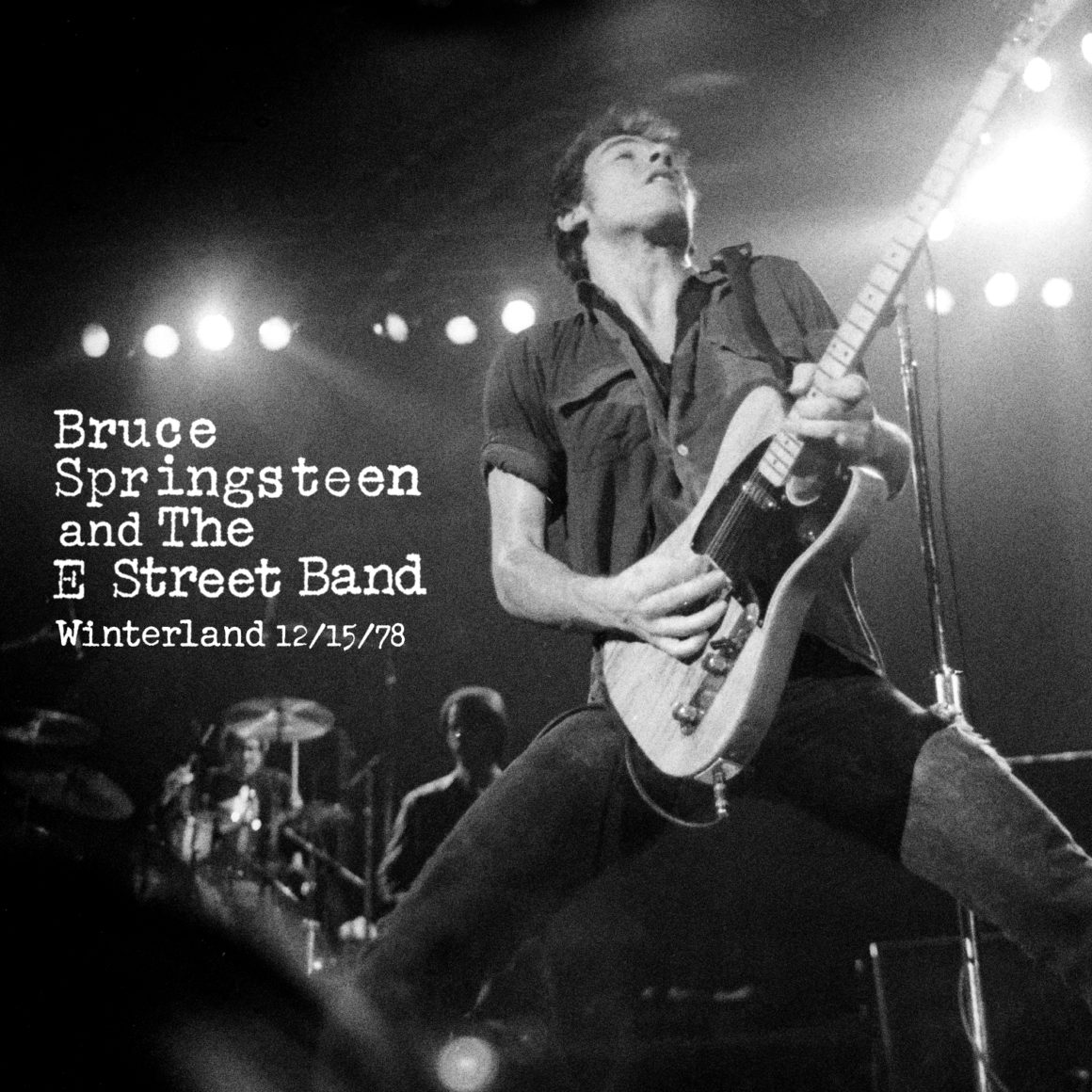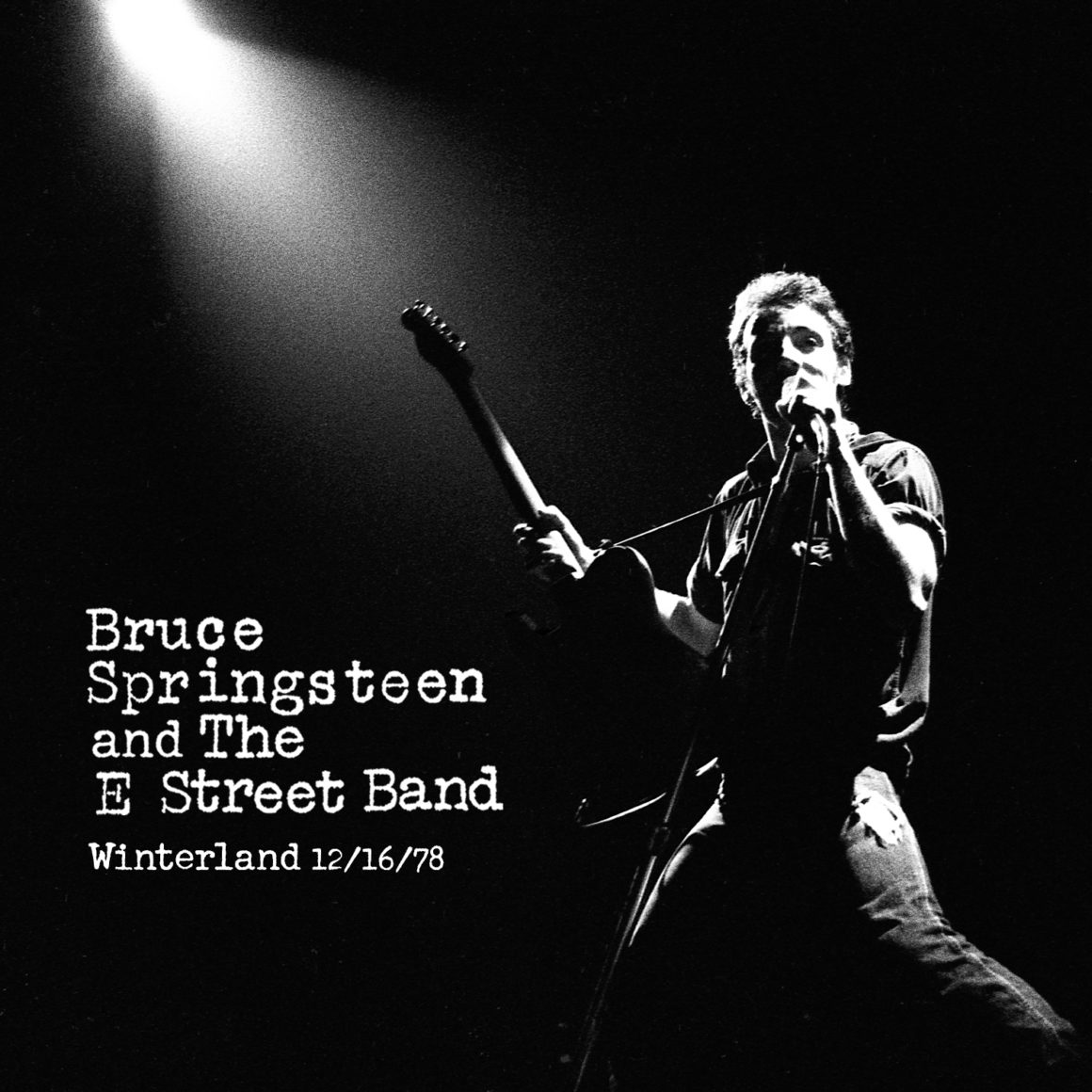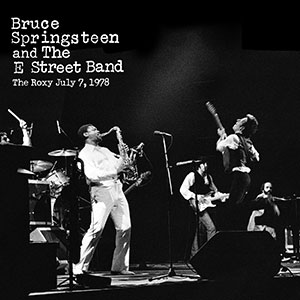Walking in a Wonder Winterland

Bruce Springsteen and The E Street Band
Winterland Arena, San Francisco, December 15 and 16, 1978
By Erik Flannigan
The home stretch of the Darkness tour in late 1978 may look like a victory lap, but its purpose was to return to key markets and seal the deal. The final push raised Springsteen and the E Street Band up from theaters played on previous legs to bigger rooms, with dates in arenas in cities like Cleveland, which closed the tour with a pair of shows at the Richfield Coliseum on New Year’s Eve and New Year’s Day 1979.
In the Bay Area, that meant graduating from the Berkeley Community Theater and San Jose Center For the Performing Arts, played in the summer, to back-to-back nights at legendary promoter Bill Graham’s Winterland, capacity 5,400.
The first night at Winterland would also serve as the fifth and final live radio broadcast from the Darkness tour, thrilling listeners around the Bay Area on KSAN-FM and strategically extended via simulcast to audiences in Sacramento, Eugene, Portland, and Seattle on their respective rock stations. The simulcast primed the pump in two of those markets, as Bruce would play the Rose and Emerald cities in just a few days’ time.
By that point, Springsteen’s management and Columbia Records had recognized that the Darkness tour broadcasts which preceded Winterland (The Roxy in Los Angeles, Agora in Cleveland, Passaic, and Atlanta) were a powerful marketing tool, not only reaching established fans in core and adjacent markets but converting fence-sitters who were loyal listeners to those all-important rock radio outlets. Live concerts were already a staple of FM radio at the time, including nationally syndicated shows like the King Biscuit Flower Hour and Rock Around the World. Simulcasts of local concerts were equally common on FM stations like WMMR in Philadelphia and WMMS in Cleveland.
But Springsteen’s strategy and tactics were unique. No artist I know of had ever done five live broadcasts from the same tour and simulcast the shows regionally — taking over the airwaves for three hours at a clip, no less. In the process, Bruce built an alliance of rock stations, and their listeners that would remain loyal for years to come. Springsteen had long enjoyed incredible word of mouth about his concerts, but the ’78 broadcasts provided tangible, recordable, and shareable proof.
There was also an idea in the air that the follow up to Darkness on the Edge of Town simply had to be a live album. The broadcasts provided an opportunity to roll in a remote recording truck and kill two birds with one stone, sending the show over the air and capturing it to multi-track tape for potential future release. It just took a few decades longer than expected.
Fans and collectors have spent millions of pixels on message boards discussing and debating which shows were recorded on multi-tracks and wondering why more early Bruce gigs weren’t done. Beyond the expense (which was significant), the act of recording a live concert to multi-track itself was no simple feat circa 1978.
A 24-track, two-inch, reel-to-reel tape recorder is a massive piece of heavy equipment with a large footprint. The recorders are mounted on carts with industrial casters so they can be rolled into position. Two-inch recorders also require a lot of power to operate, and they are extremely sensitive to the conditions of their environment, particularly temperature.
Oh, did I mention you need two of them to record a concert without gaps? Two-inch tape and recorders were designed to record one song in the studio, not a three-hour concert. Given their short tape lengths, a recording engineer had to start a tape going on one machine, wait for it to run most of the way through, then fire up a second overlapping tape on the second machine and so on. Back and forth they would go: loading, recording, and switching tapes in real time on two machines to preserve a full performance. Today, you can record an entire show to multitrack on a laptop and a breakout box that fits in a backpack.
Given the complex logistics, it should come as no surprise that multi-track recording could occasionally go wrong, even with experienced engineers and producers in the truck. Whether there were complications on the night or tapes were lost over time, the surviving multi-track reels of the first night of Winterland cover less than half the show. The inclusion of “Fire” on Live 1975/85 from 12/16, not the better-known 12/15, may be a clue that the problems occurred on the night in question.
Luckily, remote recording units typically carried a third reel-to-reel deck with them as well: a high-quality, 15-IPS, two-track recorder to serve as a back-up/reference capturing the front-of-house mix as it happened. That’s exactly what the Record Plant’s R2R did on December 15, 1978, recording a pre-broadcast stereo feed from the mixing board.
Forty-one years later, we’re fortunate those two-track, 15-IPS masters from the familiar 12/15 show were recently unearthed, along with the complete multitrack masters from the previously unheard 12/16 set. Both sources have been newly transferred via Plangent Process, restored (12/15) and mixed (12/16) by Jon Altschiller and mastered by Adam Ayan to deliver a complete document of the Winterland stand, both the beloved broadcast performance from night one and the fresh-to-the-world set from night two.
A bounty of two peak Darkness concerts should be at the top of anyone’s holiday wish list. Most will know the celebrated 12/15 set like the back of their hand from tapes and bootlegs of the broadcast, but for 12/16, here’s a user guide to this wonderful addition to the live Darkness canon.

1) Bruce changed the set on night two in deference to fans attending both shows, opening with “Good Rockin’ Tonight” and playing “Rendezvous” for the first time on the tour. Incredibly, “Rendezvous” is one of six unreleased originals performed in the 25-song set, along with “Independence Day,” “The Fever,” “Fire,” “Because the Night” and “Point Blank.”
2) Introducing a weighty “Independence Day,” Bruce says, “This is a song I wrote a couple years ago. I was originally going to put it on Darkness on the Edge of Town. This is called ‘Independence Day.’ This is for my pop.” With his parents living in nearby San Mateo, we can assume that Douglas was very likely in the audience for the performance.
3) Bruce tells a completely different and much longer story than night one setting up “Santa Claus is Comin’ to Town.” The tall tale includes entertaining references to Johnny Carson and Kellogg’s Pop Tarts, plus some audible chiming in from Stevie Van Zandt, who wants a new amplifier from Saint Nick.
4) Bruce dedicates “Racing in the Street” to “all the San Francisco night riders,” but after singing “Tonight, tonight, the strip’s just right” he goes totally blank. “I forgot the words,” he says. It is an endearing and rare moment of vulnerability, which he not only recovers from gracefully, but which seems to inject the show with an adrenaline shot: from that point forward, Springsteen and the band are en fuego. “Jungleland” brings the first set to a crackling close, riding the powerful dynamics of Clarence Clemons on saxophone and Van Zandt’s guitar solo, setting the table for a stunning second act.
5) “It’s Hard to Be a (Saint in the City)” is another set list change and serves as a stonking start to a second set for the ages. The guitar tone on this one should be bottled as a stimulant.
6) “Because the Night” begins with what might best be described as an experimental guitar intro that is more a sonic survey of echo, delay, and sustained notes than strumming. It’s the most Frippertronics approach I have ever heard Springsteen explore. Fascinating.
7) How about the version of “She’s the One”? The intro weaves “Mona” and “Preacher’s Daughter,” while Bruce later riffs on Van Morrison/Them’s “Gloria.” Stevie sings soulful retorts all over the performance, all in the service of Bruce’s heightened lead vocal. Listen to the incredible run he takes through, “Just one kiss, she’ll turn them long summer nights, with her tenderness / The secret pact you made, when her love could save you, from the bitterness… WHAAAAHOO!” Holy crap.
8) “The Fever” is focused and luscious, providing a deserved spotlight on the band, especially Danny Federici and the Big Man, who shine ever-so-brightly as they thread their solos around each other. Rest in peace, E Street icons.
9) A slightly shambolic “Detroit Medley” features a rare foray into Jerry Lee Lewis’ “Whole Lotta Shakin’ Goin’ On.”
10) Finally, connoisseurs of audience noise (and I know you’re out there) should be extremely pleased with the level of fan interaction in Jon Altschiller’s mix. The crowd is ever-present and in full voice throughout the night and who can blame them?
Thanks to former Columbia product manager Dick Wingate for supplying contemporary information and documentation about the Darkness tour broadcasts.
